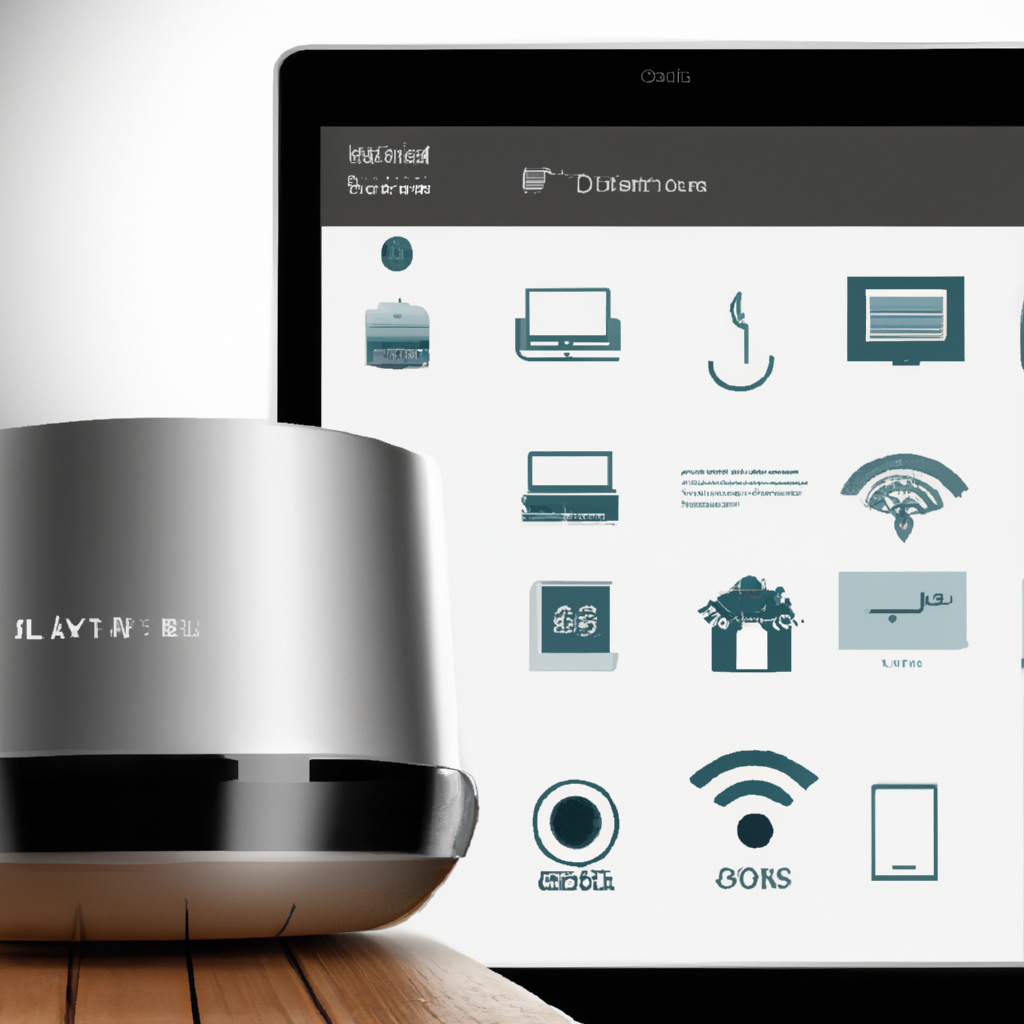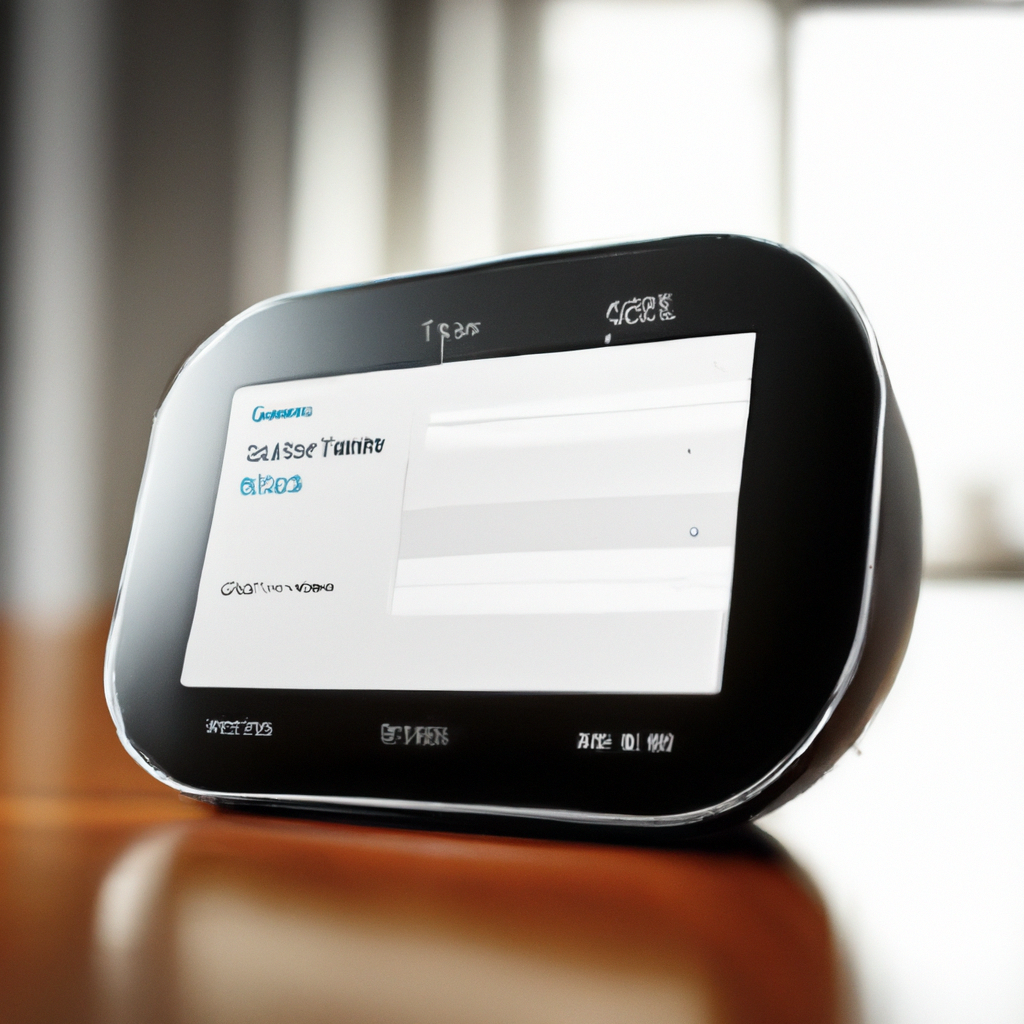Imagine living in a home where lights turn on and off automatically, the temperature adjusts to your preferences, and your favorite music greets you as you walk through the door. This is not a scene from a futuristic movie, but a reality in the world of smart homes. A smart home is a dwelling equipped with advanced technologies that allow you to control various aspects of your living space through voice commands or a mobile app. From controlling appliances and security systems to managing energy consumption, smart homes offer convenience, comfort, and enhanced efficiency. In this article, we will explore the fascinating world of smart homes and delve into how these innovative technologies work to make our lives easier and more connected.
What is a smart home?
Defining a smart home
A smart home refers to a living space that incorporates advanced technologies and automation to enhance the comfort, convenience, and security of residents. It utilizes connected devices and systems that can be controlled remotely, either through a central hub or via mobile applications. The goal of a smart home is to create an intelligent and intuitive living environment that adapts to the needs and preferences of its occupants.
Features of a smart home
Smart homes are equipped with a myriad of features that make daily living more efficient and enjoyable. These features include automated lighting systems that adjust brightness based on the time of day or occupancy, smart thermostats that learn and adapt to your temperature preferences, and integrated security systems that allow for remote monitoring and control. Additionally, smart homes often come with voice-controlled virtual assistants, such as Amazon Alexa or Google Assistant, which enable hands-free control of smart devices and provide access to a vast array of information and services.
Benefits of a smart home
The adoption of smart home technology offers numerous benefits to homeowners. Firstly, it brings a new level of convenience and comfort. With voice commands or a few taps on a smartphone, you can control various aspects of your home, such as adjusting the temperature, turning on lights, or even starting appliances remotely. This saves time and energy, allowing you to focus on other tasks or simply relax. Additionally, smart homes promote energy efficiency by optimizing energy usage based on occupancy and adjusting settings to conserve resources. Moreover, smart home security systems provide enhanced protection, with real-time alerts and the ability to monitor your home from anywhere in the world. Finally, smart homes offer better control and monitoring of various aspects, such as water usage, air quality, and even the health of plants, creating an environment that aligns with your preferences and needs.
How does a smart home work?
Internet of Things (IoT)
At the core of a smart home lies the concept of the Internet of Things (IoT). IoT refers to a network of devices interconnected through the internet, enabling them to collect and exchange data. In a smart home, IoT technology allows various devices and systems to communicate with each other, creating a connected ecosystem. This network enables seamless communication and coordination between different smart devices, facilitating automation and control.
Sensors and devices
Smart homes incorporate a wide range of sensors and devices that gather and transmit data for analysis and action. These sensors can detect motion, temperature, humidity, light levels, and more, providing valuable information about the home environment. For example, occupancy sensors can determine whether a room is occupied or not, triggering the automation of lights or adjusting the temperature accordingly. Similarly, smoke detectors or water leak sensors can detect potential hazards and send notifications to homeowners to mitigate risks proactively.
Connectivity and communication
In order for smart devices to communicate with each other and be controlled remotely, they require a reliable network connection. Most smart homes rely on Wi-Fi or Bluetooth connectivity, allowing devices to connect to the internet and be accessed through mobile applications or central hubs. This connectivity enables seamless control and monitoring of devices, even when you’re away from home. Moreover, emerging technologies like 5G promise faster and more reliable connections, further enhancing the capabilities and responsiveness of smart home systems.
Integration and automation
The true power of a smart home lies in its ability to integrate and automate various devices and systems. Integration involves connecting different devices and platforms to work together harmoniously, whereas automation allows for the execution of predefined actions based on certain triggers or schedules. For example, you can create a “Goodnight” routine that turns off all the lights, adjusts the thermostat to a comfortable sleeping temperature, and activates the security system. By leveraging integration and automation, smart homes can seamlessly adapt to residents’ needs, making daily living effortless and enjoyable.

Types of smart home devices
Smart speakers
One of the most popular smart home devices is the smart speaker. These voice-controlled assistants, such as Amazon Echo or Google Nest, serve as the central communication hub for various smart devices in your home. They enable you to control lights, thermostats, TV, music, and more through simple voice commands. Smart speakers also provide access to a wide range of online services, including weather forecasts, news updates, and music streaming, making them a versatile addition to any smart home.
Smart thermostats
Smart thermostats revolutionize home climate control, allowing you to effortlessly optimize temperature settings and save energy. These devices learn your habits, preferences, and occupancy patterns over time and automatically adjust the temperature accordingly. You can also control them remotely via mobile apps to ensure optimal comfort before you arrive home or to conserve energy while you’re away. Some smart thermostats even integrate weather forecasts to proactively adjust settings based on external conditions, ensuring comfort while optimizing energy usage.
Smart lighting
Smart lighting systems offer advanced control over your home’s lighting, providing convenience, ambiance, and energy savings. With smart light bulbs, switches, or dimmers, you can remotely control and automate lighting based on your preferences or routines. For example, you can program lights to gradually brighten in the morning to simulate a natural sunrise, or set them to turn on automatically when you enter a room. Furthermore, smart lighting solutions often offer customizable color options, allowing you to create various moods and ambiance to suit different occasions.
Smart security systems
Home security is a top priority for many homeowners, and smart security systems provide a comprehensive and accessible solution. These systems typically include features such as video doorbells, surveillance cameras, motion sensors, and smart locks. They allow remote monitoring and control, sending instant alerts to your smartphone when suspicious activity is detected. With smart security systems, you can check who is at your doorstep, monitor your property while you’re away, and even grant access to visitors remotely. This added layer of security brings peace of mind and ensures the safety of your loved ones and belongings.
Smart appliances
Another category of smart home devices includes appliances that have been equipped with internet connectivity and advanced features. These appliances, such as refrigerators, washing machines, ovens, and even coffee makers, offer enhanced convenience and functionality. With remote access and smart controls, you can monitor and adjust settings, receive notifications, and even start or stop appliance usage from anywhere using your smartphone or voice commands. Smart appliances also contribute to energy efficiency by optimizing consumption, providing valuable insights, and allowing you to make informed decisions.
Key components of a smart home
Central hub
A central hub serves as the brain of a smart home, coordinating the communication and control of various devices and systems. It acts as a central command center, consolidating data, and enabling seamless integration and automation. With a central hub, you can control multiple devices simultaneously, create customized routines, and access all the features and functions of your smart home ecosystem from a single interface. Some popular examples of central hubs include Amazon Echo Plus, Samsung SmartThings, and Google Nest Hub.
Mobile applications
Smart home mobile applications play a crucial role in providing remote control, monitoring, and management capabilities. These apps allow you to control individual devices or entire systems from your smartphone or tablet. With the intuitive interfaces and user-friendly features, you can easily adjust settings, create schedules, receive notifications, and access advanced functionalities. Additionally, many smart home apps offer compatibility with voice assistants, enabling seamless integration and voice control.
Smart home devices
The devices themselves are the heart of a smart home. These can include smart speakers, thermostats, lighting systems, security cameras, and various other connected appliances. The smart devices communicate with each other and with the central hub or mobile applications, enabling seamless control and automation. Each device brings unique features and functionalities to enhance different aspects of your home, ultimately contributing to an intelligent and interconnected living environment.
Internet connection
An essential component for a smart home is a reliable and high-speed internet connection. Without a stable internet connection, smart devices may not be able to send or receive data, leading to limited functionality. A fast internet connection enables real-time communication between devices, quick and responsive control via mobile apps or voice commands, and access to cloud services for data storage and analysis. Therefore, having a robust internet connection is crucial to ensure optimal performance and the full potential of a smart home ecosystem.

Advantages of smart homes
Convenience and comfort
One of the primary advantages of smart homes is the convenience and comfort they bring to residents. With the ability to control various devices and systems through voice commands or mobile apps, you can easily adjust settings and customize your living environment to suit your preferences. Whether it’s adjusting the temperature to the perfect level, turning on ambient lighting for a cozy atmosphere, or preparing your morning coffee from the comfort of your bed, smart homes make everyday tasks effortless and enjoyable.
Energy efficiency
Smart homes promote energy efficiency by optimizing energy usage and reducing unnecessary consumption. Smart thermostats, for example, learn your temperature preferences and automatically adjust settings based on occupancy and external conditions, saving energy without sacrificing comfort. Similarly, smart lighting systems ensure that lights are only turned on when needed, using motion sensors or schedules to reduce energy waste. By actively monitoring and managing energy consumption, smart homes contribute to a greener and more sustainable future.
Enhanced security
Home security is a significant concern for many homeowners, and smart home technology provides advanced security features to address these concerns. With smart security systems, you can remotely monitor your home through surveillance cameras, receive real-time alerts for suspicious activity, and even communicate with visitors at your doorstep using video doorbells or intercom systems. Additionally, smart locks allow for keyless entry, ensuring that only authorized individuals can access your home. These features provide peace of mind, knowing that your home and loved ones are protected, even when you’re away.
Better control and monitoring
Smart homes offer better control and monitoring of various aspects of your living space. From water usage to air quality, smart devices can provide real-time data and insights to help you make informed decisions. For instance, smart irrigation systems can optimize water consumption based on weather conditions and soil moisture levels, promoting efficient water usage. Air quality sensors can detect pollutants and adjust ventilation systems accordingly, creating a healthier indoor environment. By having access to this kind of information, you can take proactive measures to improve the quality of your home and prioritize your well-being.
Smart home automation
Automation is a key feature of smart homes, enabling routines and tasks to be executed automatically based on triggers or schedules. With automation, you can create personalized routines that match your daily activities and preferences. For example, you can set your smart home to gradually brighten the lights in the morning, adjust the thermostat to a comfortable temperature when you arrive home, or activate the security system automatically when you leave. These automated routines save time and effort, allowing you to focus on other tasks and enjoy a more streamlined and efficient daily life.
Challenges and concerns
Privacy and data security
As smart homes collect and process large amounts of data, concerns about privacy and data security arise. With devices constantly monitoring and gathering information about your daily routines and habits, there is a need for robust security measures to protect this data from unauthorized access or misuse. Homeowners must ensure that their smart home devices are updated with the latest security patches, use strong passwords, and regularly review privacy settings. Additionally, choosing reputable brands and manufacturers that prioritize data protection can help alleviate these concerns.
Compatibility issues
One challenge of adopting a smart home ecosystem is the compatibility between devices and platforms. Not all devices are designed to work together seamlessly, and homeowners may encounter compatibility issues when trying to integrate different brands or technologies. To overcome this challenge, it is essential to conduct thorough research and choose devices that are compatible with each other and can be controlled through a common centralized system. This ensures that all devices can communicate effectively and work together to create a cohesive smart home experience.
Reliability and dependence on technology
Smart homes heavily rely on technology infrastructure, such as network connectivity and reliable power supply. Dependence on these technologies presents a challenge when network outages or power failures occur. In such cases, the functionality of smart devices may be limited, or remote control may be temporarily unavailable. However, manufacturers are constantly improving device reliability and implementing fail-safe mechanisms to mitigate these concerns. Additionally, having backup power sources and redundant network connections can further enhance the reliability of a smart home system.
Cost of implementation
The initial cost of implementing a smart home can be a significant barrier for some homeowners. Smart devices, especially those with advanced features and capabilities, tend to be more expensive than their traditional counterparts. However, it is important to consider the long-term benefits and potential cost savings that come with smart home technology. Energy-efficient devices can lead to reduced utility bills, while automation and optimization can help extend the lifespan of appliances. Additionally, as the market for smart home technology expands, prices are becoming more accessible, making it easier for homeowners to embrace the advantages of a smart home.

Smart home trends and future
Voice-controlled smart homes
Voice control technology has gained significant popularity in recent years and is set to become even more prevalent in the future of smart homes. With voice assistants like Amazon’s Alexa and Google Assistant, homeowners can effortlessly control their smart devices through simple voice commands. This hands-free interaction offers a more intuitive and seamless user experience, eliminating the need for physical interfaces or mobile apps. As voice recognition technology continues to advance and become more accurate, voice-controlled smart homes will become increasingly common.
Artificial Intelligence (AI) integration
The integration of artificial intelligence (AI) is another trend that is shaping the future of smart homes. AI capabilities enable smart devices to learn and adapt to user behavior, preferences, and patterns, providing a more personalized and intelligent living environment. AI algorithms can analyze data collected from various sensors, identify trends, and make predictions, enabling proactive actions and automation. For example, an AI-powered smart home system can adjust the thermostat based on weather forecasts, predict appliance usage patterns to optimize energy consumption, and even anticipate residents’ needs and preferences.
Increased focus on energy management
With growing concerns about climate change and sustainability, the future of smart homes will likely see an increased focus on energy management. Smart homes will offer more advanced energy monitoring and management systems, allowing homeowners to track and optimize their energy consumption effectively. New technologies, such as energy monitoring sensors and predictive analytics, will enable homeowners to identify energy-saving opportunities and make data-driven decisions to reduce their carbon footprint. Integration with renewable energy sources, such as solar panels or wind turbines, will also become more widespread, enabling homeowners to generate their own clean energy and further reduce their reliance on the grid.
Expansion of smart home ecosystems
As the popularity of smart home technology continues to grow, the future will see an expansion of smart home ecosystems. More manufacturers and developers will enter the market, offering a wider range of devices and services that can be seamlessly integrated within a smart home system. This expansion will enable homeowners to customize their smart homes to an even greater extent, choosing from a diverse selection of devices that best fit their needs and preferences. Additionally, increased compatibility and interoperability between different brands and platforms will simplify the process of creating a cohesive smart home ecosystem.
The impact of smart homes on daily life
Streamlining daily routines
Smart homes have a profound impact on streamlining daily routines, eliminating the need for manual intervention in various aspects of home management. By automating repetitive or time-consuming tasks, such as adjusting the temperature, turning on lights, or controlling appliances, smart homes free up valuable time and energy. This allows homeowners to focus on more meaningful activities or simply enjoy a more relaxed and stress-free lifestyle.
Improved home entertainment
Smart home technology enhances the home entertainment experience, providing seamless integration between audio-visual systems and other smart devices. With voice commands or mobile apps, you can control your TV, speakers, streaming services, and even adjust the lighting and ambiance to create the perfect atmosphere for movie nights or gatherings. Smart home entertainment systems offer a more immersive and personalized experience, transforming your living room into a home theater or a party venue with just a few simple commands.
Impact on energy consumption
Smart homes have a significant impact on energy consumption, promoting energy efficiency and reducing wastage. By utilizing sensors, automation, and optimization algorithms, smart homes can actively monitor and control energy usage in real-time. This allows for efficient management of heating, cooling, lighting, and other energy-intensive systems, significantly reducing energy waste and lowering utility bills. Smart homes also provide homeowners with easy access to energy consumption data, empowering them to make informed decisions and adjust their behavior to conserve energy.
Transforming home security
Smart home technology has revolutionized home security, transforming the way homeowners protect their property and loved ones. With surveillance cameras, motion sensors, and smart locks, homeowners can monitor their homes remotely and receive instant alerts in case of suspicious activity. This level of control and monitoring provides peace of mind, ensuring that your home remains secure even when you’re away. The integration of smart security systems with other devices, such as doorbells and lighting, further enhances security measures, creating a comprehensive and interconnected security ecosystem.

Smart homes and sustainability
Reduced energy consumption
Smart homes contribute to sustainability goals by promoting reduced energy consumption and efficient resource management. With features like automated lighting and smart thermostats, energy waste is minimized by ensuring that lights and heating/cooling systems are only used when necessary. Smart appliances optimize energy usage and reduce standby power consumption, further contributing to energy savings. By actively monitoring and managing how energy is used, smart homes help homeowners become more conscious of their environmental impact and encourage more sustainable behavior.
Smart grids and renewable energy integration
Smart homes have the potential to play a significant role in the integration of renewable energy sources and the development of smart grids. With the ability to monitor energy usage and production in real-time, smart homes can effectively manage and optimize the consumption of renewable energy generated through solar panels or other renewable sources. By integrating with smart grids, smart homes can also contribute to balancing the demand and supply of electricity, helping utilities providers manage peak loads and reducing strain on the grid during high-demand periods.
Eco-friendly practices
Beyond energy consumption, smart homes promote various eco-friendly practices that contribute to a sustainable lifestyle. For example, smart irrigation systems optimize water usage by considering weather conditions and soil moisture levels, preventing overwatering and reducing water waste. Smart lighting systems ensure that lights are turned off when not needed, eliminating unnecessary energy consumption. Additionally, smart home ecosystems facilitate recycling and waste management by providing reminders and personalized schedules to help homeowners stay organized and participate in sustainable actions.
Considerations for adopting a smart home
Compatibility with existing devices
When considering the adoption of a smart home system, it is important to evaluate the compatibility of devices with existing infrastructure and technology. Assess whether your current devices, such as smartphones, tablets, or appliances, can seamlessly integrate with the smart home ecosystem you plan to create. Consider compatibility not only in terms of hardware but also in terms of software platforms and communication protocols. This ensures that your existing devices can effectively communicate and interact with new smart devices, creating a cohesive and interconnected smart home environment.
Budget and cost
The cost of implementing a smart home can vary significantly depending on the type and number of devices you choose. Consider your budget and prioritize the devices and features that align with your needs and preferences. Conduct thorough research to compare prices, read reviews, and understand the long-term benefits and cost savings associated with investment in smart home technology. While some devices may be initially more expensive than traditional alternatives, the potential energy savings, convenience, and improved living experience often outweigh the upfront costs.
Security measures
Given the potential vulnerabilities associated with smart home devices, it is crucial to prioritize security measures during the adoption of smart home technology. Choose reputable brands that have a strong focus on security and privacy. Ensure that devices are regularly updated with the latest firmware and security patches. Create strong and unique passwords for all devices and change them periodically. Additionally, consider additional security features, such as two-factor authentication or encryption, to further protect your data and maintain your privacy.
Expanding and future-proofing
When adopting a smart home system, it is essential to consider its scalability and the potential for future expansion. As technology evolves and new devices enter the market, your smart home ecosystem should have the flexibility to accommodate new features and functionalities. Choose a central hub or platform that supports a wide range of devices and protocols, enabling easy integration of future additions. Additionally, consider the availability of software updates and manufacturer support to ensure that your devices remain compatible and receive necessary security updates and feature enhancements over time.
In conclusion, a smart home is a living space that leverages advanced technologies to enhance comfort, convenience, and security. By incorporating Internet of Things (IoT) technology, sensors and devices, connectivity, and integration, smart homes create an ecosystem where devices communicate and automate various aspects of daily living. Smart speakers, thermostats, lighting systems, security systems, and appliances are key devices that transform ordinary homes into intelligent living spaces.
The advantages of smart homes include convenience, energy efficiency, enhanced security, better control and monitoring, and home automation. However, challenges such as privacy and data security, compatibility issues, reliability, and cost of implementation need to be addressed. The future of smart homes will see increased adoption of voice-controlled systems, artificial intelligence integration, and a focus on energy management and sustainability. Smart homes have a profound impact on daily life, streamlining routines, enhancing home entertainment, reducing energy consumption, and transforming home security.
With a focus on sustainability, smart homes contribute to reducing energy consumption, integrating renewable energy sources, and promoting eco-friendly practices. When considering adopting a smart home, factors such as compatibility, budget, security measures, and future expansion should be taken into account. By carefully planning and selecting the right devices and systems, homeowners can create a smart home that aligns with their needs, preferences, and values, revolutionizing their daily living experience.











